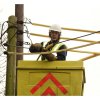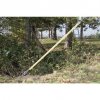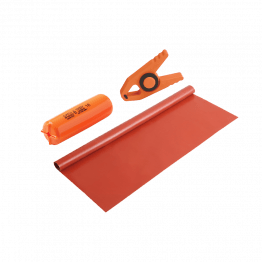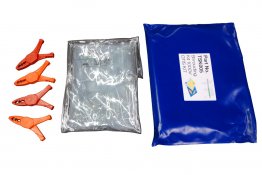
Insulating Shrouding
Insulating shrouding refers to protective coverings or sleeves made from insulating materials that are used to cover and insulate live electrical conductors or components. These shrouds play a critical role in enhancing electrical safety by preventing accidental contact with energized parts, reducing the risk of electric shock, and providing insulation in various applications. Here are some common aspects associated with insulating shrouding:
Material: Insulating shrouds are typically made from materials with high electrical resistance, such as rubber or other insulating polymers. These materials help to prevent the flow of electric current and provide a barrier between the live conductors and the surroundings.
Application: Insulating shrouds are commonly used in electrical installations, particularly in areas where there is a risk of accidental contact with live components. They can be applied to energized conductors, connectors, busbars, and other electrical equipment.
Color Coding: Similar to other electrical insulating materials, insulating shrouds may be color-coded to indicate their voltage class or other specifications. Color coding helps users easily identify the appropriate shroud for a specific application and voltage level.
Protection Against Environmental Factors: Insulating shrouds are designed to withstand environmental factors such as moisture, chemicals, and UV exposure. This ensures their durability and effectiveness in various conditions.
Customization: Insulating shrouds may come in various shapes and sizes to accommodate different types of electrical components and installations. Some may be pre-molded for specific applications, while others can be customized or cut to fit particular requirements.
Heat Resistance: In certain applications, insulating shrouds may need to exhibit heat resistance to withstand elevated temperatures. This is especially important in environments where electrical components may generate heat during operation.
Ease of Installation: Insulating shrouds are designed for ease of installation. They can be slipped or fitted over live conductors or components, providing a protective layer without the need for complex installation procedures.
Compliance with Standards: Depending on the application and industry, insulating shrouds may need to comply with specific safety standards and regulations. Manufacturers often produce shrouds that meet or exceed these standards to ensure their effectiveness in preventing electrical accidents.
It's important to follow manufacturer recommendations, industry standards, and safety guidelines when selecting and installing insulating shrouds to ensure proper electrical safety measures are in place. Regular inspections and maintenance are also crucial to identify any signs of wear or damage to the insulating shrouding.











